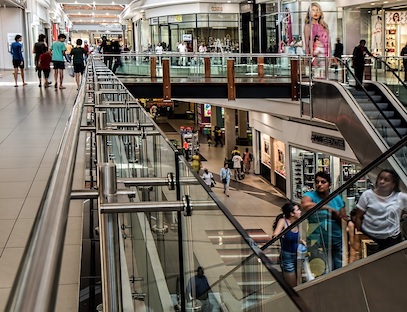Resilient. That’s how Cushman & Wakefield described the U.S. retail sector in its fourth-quarter 2023 Shopping Center report. Why? Because because the average shopping center vacancy rate fell to its lowest point since 2007 as last year drew to a close.
Officials with Cushman & Wakefield said that shopping center owners have adapted, bringing in retailers that cater to the specific needs of local consumers.
“Shopping centers have shown incredible resilience and adaptability, continuing to attract a diverse range of businesses,” said Barrie Scardina, president of Americas Retail Services for Cushman & Wakefield, in a statement. “Healthy demand for retail space can be traced to surprisingly strong economic growth in 2023, particularly from the consumer sector.”
The national vacancy rate for shopping centers stood at 5.3% as of the end of the fourth quarter of 2023, a decline of 10 basis points from the previous quarter. In the fourth quarter, demand surged, too, with net absorption reaching 6.1 million square feet, a 71% increase from the third quarter.
Part of the reason for this low vacancy rate? Developers haven’t added much new retail construction since the onset of the COVID pandemic. In 2023, retail completions totaled just more than 8 million square feet, with 20% of this space delivered in the fourth quarter.
A resilient macro environment prompted retailers to expand their store counts, resulting in 769 net retail store openings in 2023. Although this represented a 50% decrease from 2022, it marked the first two-year stretch of net store openings since 2013-2014.
The wave of openings translated into positive net absorption for 11 consecutive quarters, driven predominantly by discount and grocery, with other segments like apparel, footwear, luxury and beauty also witnessing a resurgence in net store counts.
“Despite numerous headwinds—inflation, rising interest rates, reduced savings —spending has been largely unimpeded from a macro perspective as of now,” Scardina said. “This could potentially change in 2024 as many shoppers are spending more of their budget on essentials like groceries, personal care and rent.”
In the fourth quarter, the retail market absorbed 6.1 million square feet of space, a 33% increase compared to the average over the first three quarters of 2023. However, the Cushman & Wakefield report indicates a slowing trend in absorption levels over the longer term, slipping from 38.8 million square feet in 2022 to 19.7 million square feet in 2023.
Given the favorable outlook for retail tenant demand, the pullback in absorption is likely due to limited shopping center space available to lease. With vacancy rates in many markets already below historical norms, tenants face increasingly limited suitable options. The low construction pipeline of 13.9 million square feet suggests this imbalance will persist.
Asking rents continue to rise in response to a tight market, reaching an average of $23.70 per square foot in the fourth quarter, a 4.1% increase from a year earlier. Asking rents have cumulatively risen 16.9% since 2019 and 41.1% over the past decade.
It’s difficult to envision vacancy rates going much lower, even if the economy remains resilient,” Scardina said. “Layer in our baseline expectation for slowing household income growth, tighter consumer credit and weaker corporate earnings, and the real estate demand outlook seems poised to throttle back in 2024. Consumers will be more cautious, and retailers will follow suit.”




